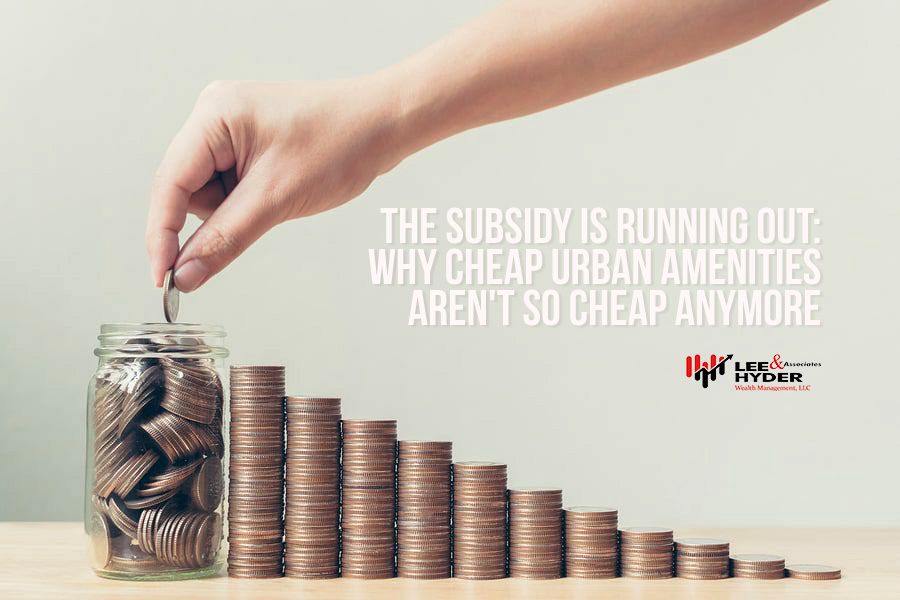The Subsidy Is Running Out: Why Cheap Urban Amenities Aren’t So Cheap Anymore
There’s an old business school joke about an entrepreneur who prices his widgets at half the cost of making them. “It’s true I’m losing money on every sale,” he explains, “But I’ll make up for it in volume.”
Over the past decade this has seemingly been the business model of a host of tech-enabled companies. Their goal hasn’t been purposely to lose money, though they’ve burned through billions of dollars a year in investors’ capital. It’s been to gain a dominant market share, which they hope will enable them to transition into profitability at some future point.
The result has been a significant lifestyle boost, especially among younger, urban consumers. They’ve enjoyed cheap car rides, inexpensive meal delivery, unlimited movie tickets, and more. That is until about 18 months ago. Since then, many of these companies offering artificially low prices for goods and services have either gone bankrupt or substantially raised their prices.
Why this change? Derek Thompson, a financial writer for The Atlantic, explains that inflation and the worker shortage are mostly to blame.1 This business model where companies subsidize their product in an effort to gain market share was born in a low interest rate environment.
For Uber to provide rides at half the cost of taxis they need cheap money and investors who believe that profitability is just one more round of funding away.
Inflation and the resulting rise in interest rates have crimped this model in two ways. First, rising rates have made borrowing more expensive and other investments more attractive. Second, the upward pressure on wages has made it more difficult to recruit drivers. As a result, that ride to the airport that used to cost $30 now might run you closer to $70.
Your ride was previously so cheap because it was being subsidized by an investor.
This is the model behind many popular services. Thompson noted, “if you woke up on a Casper mattress, worked out on a Peloton, Ubered to a WeWork, ordered on DoorDash for lunch, took a Lyft home, and ordered a dinner through PostMates only to realize your partner had started on a Blue Apron meal, your household had, in one day, interacted with eight unprofitable companies that collectively lost about $15 billion in one year.”
The problem isn’t that these companies lack innovation. Uber’s amazing app that lets you track your driver in real time was based on a James Bond gadget.2 It’s their assumption that innovation alone can shield you from market forces. When your business model doesn’t depend on profitability, somebody is going to be left holding the bag.
From the printing press to your tablet computer, technological progress has enabled better productivity and improved products that cost less. But history has shown that it’s very difficult to identify the next Amazon or Netflix when it’s just starting out.
Instead, the prudent investor will pursue a long-term strategy designed to participate in the gains of break-out companies while seeking to mitigate the losses of those that fail. This is done through a truly diverse portfolio, a long-term commitment, and the guidance of a trusted advisor.
Sources:
To book a 15-minute consultation and chat about your plan (where you are now, and where you want to be in the future), it’s easy – just call 330-836-7800 or >>click here to reserve a spot on my calendar.<<






